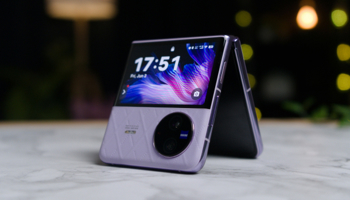If you have ever googled UX theories, then you’ll know just how many articles, blog posts and news stories there are out there already, about 3,540,000 to put a number on it. That means it can be hard to cut through all the clutter and really find the good stuff and by the good stuff, we mean the UX theories that are actually useful, practical and most importantly actionable, when it comes to designing, refining and optimizing your website. Luckily, that’s where this blog can help, as our UX Designer Jake has given us the inside scoop on his favourite UX theories and why… enjoy!
1. Fitts’s Law
Fitts’s law states that the time to acquire a target area (for example to click on a button on a website), is a function of the size of the target area and the distance to said target area. This means the further away and the smaller the target area is, the longer it takes to acquire it.
With this in mind, you should consider the size of your calls to action (CTAs), especially on mobile devices, as they take longer to interact with, as well as also considering the CTA’s location, relative to the content that the CTA refers to. This distance should be as short as possible.
2. Hick’s Law or the Hick-hyman Law
This law states that the more choice (stimuli) someone is provided with to choose from, the longer it takes them to make a decision, on which choice to interact with, if indeed they choose any at all.
Hick’s Law is regularly applied to website navigations, through categorisation and the limitation of the levels users have access to within the navigation. Sites such as Amazon, John Lewis & Medium would be an absolute nightmare to navigate without applying such measures.
3. Jakob’s Law
Jakob’s Law states that users spend the majority of their time on other sites. Which means they have developed preconceptions (mental modals) on how they expect your site to work.
This is why you’ll find a lot of sites have familiar interactions that you see time and time again. Constantly trying to invent unique interactions will often do more harm than good, as users will not know how to use it and therefore resort to leaving your site entirely.
4. Layer Cake
With less than 20% of users reading the content on a web page and the rest merely scanning through that content in search of something of perceived value, it’s important to accommodate this majority when designing your site. If content is easily scanned this saves users a lot of time and effort in finding what they want and accomplishing their goals.
This is where the layer-cake scanning pattern comes in. This pattern shows user’s main fixations are typically on headings and subheadings, with occasional fixations on body text in search of desired information. Accommodating this scanning pattern by considering such areas as heading styles, content chunking and content order, will all contribute to helping your user achieve their goals faster.
5. Aesthetic Usability Effect
This refers to users perceiving aesthetically pleasing designs as being more usable.
Users tend to have a positive emotional response to aesthetically pleasing design, whether that’s an interface, a watch or even a juicer. This effect has also shown that users are far more tolerant of minor usability issues on a more aesthetically pleasing interface, although this does not apply to major usability issues.
“This effect is a major reason why a good user experience can’t just be a functional UI — designing an interface that’s attractive as well as functional is worth the resources.” - Nielsen Norman Group
6. Peak End Rule
The Peak End Rule is a cognitive bias in which people remember the most intense parts (peaks) and the final moments (End) of an experience most vividly. These points have much more impact on how someone remembers that experience overall.
With regard to UX design, there are many ways in which we can create positive experiences; by creating moments of joy, convenience or even comfort thus invoking a positive response from a user. It is also essential to consider the importance of UX when avoiding potentially negative experiences. As humans we also have a negativity bias, where the bad experiences can carry far more weight than the positive ones, thus potentially creating a negatively perceived experience overall.
7. Occam’s Razor
Occam’s Razor in its simplest terms states that when presented with multiple viable options, the simplest of those options should be selected.
So how can this be applied to design? Occam’s Razor is a great principle to apply when making design decisions in order to ensure we do not add unnecessary complexity to our interfaces with redundant features and interactions.
8. Authority Principle
The Authority Principle describes a person’s tendency to agree with people in positions of authority e.g. doctors, police and experts in a relevant field. This refers to the person’s assumption that people in these positions carry superior knowledge regarding their subject matter, and therefore their advice is likely to create a more desirable outcome.
The authority principle is often utilised in the context of social proof, such as testimonials, to influence users to buy into a product or service based on recommendation from authoritative figures.
9. Cognitive Load
Cognitive Load in UX design refers to the mental processing power required for a user to use a product. If the processing power demand of a product exceeds the user’s capability to process it, the overall experience is damaged.
With a user’s processing power being a finite resource, our focus has to be on how we can reduce the cognitive demand of a product. To do this we can focus areas such as Jakob’s Law by utilising existing mental models, reduction of visual clutter and simplifying the user journeys as much as possible.
If all that hasn’t peaked your interest and got you fired up to start improving the on-site user experience of your website, then we don’t know what will! Happy UX-ing.




